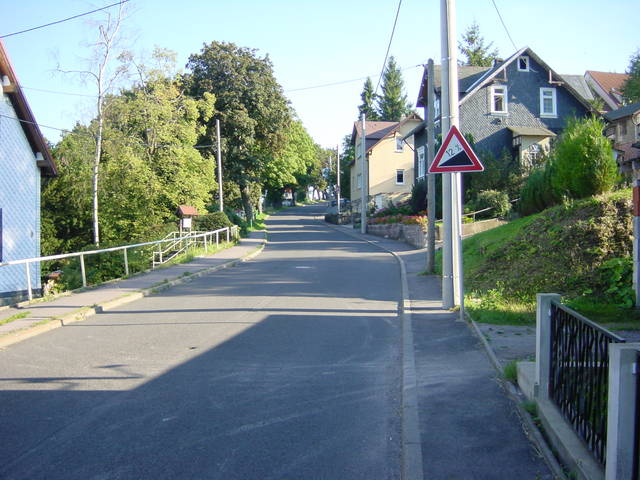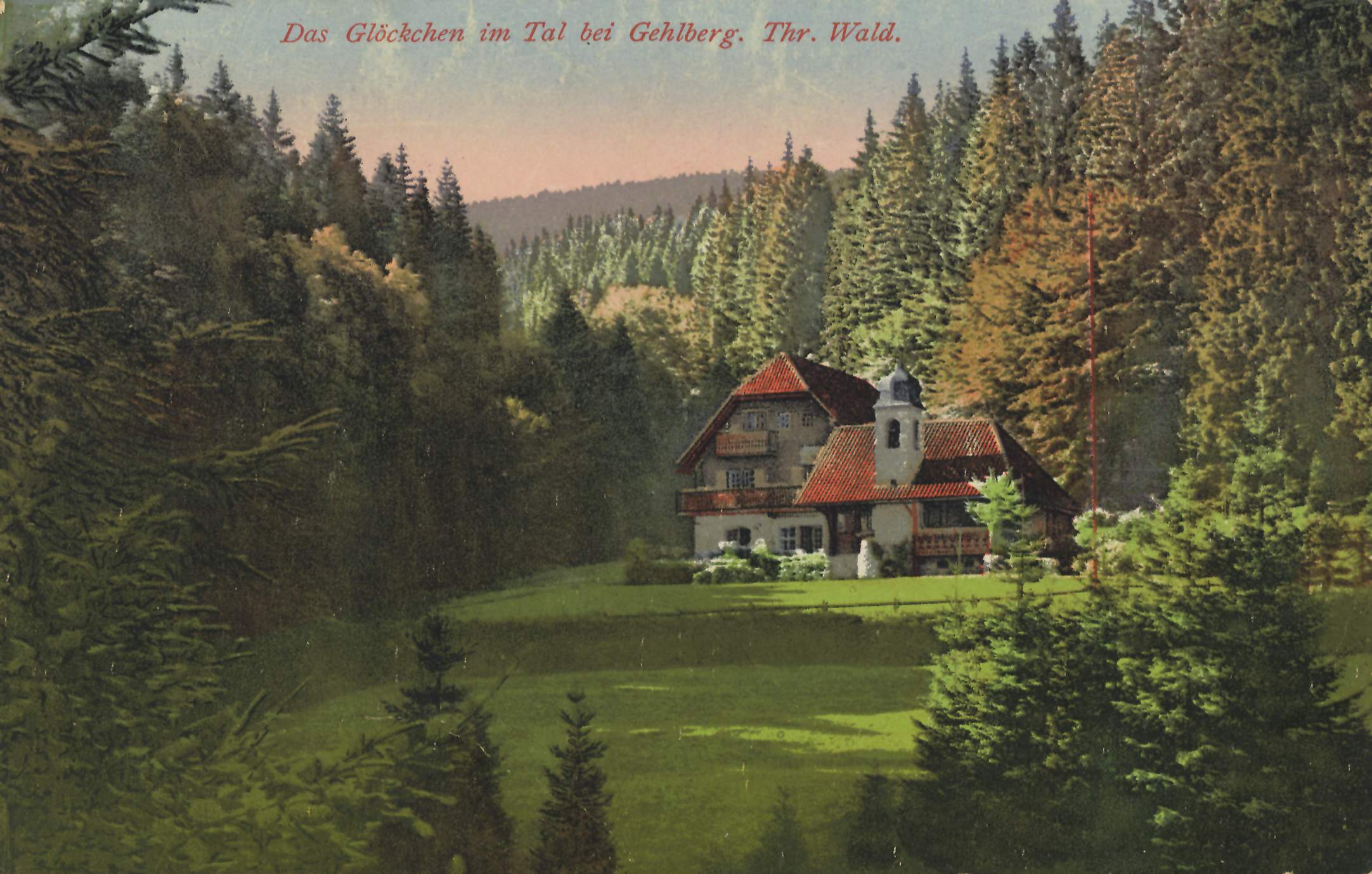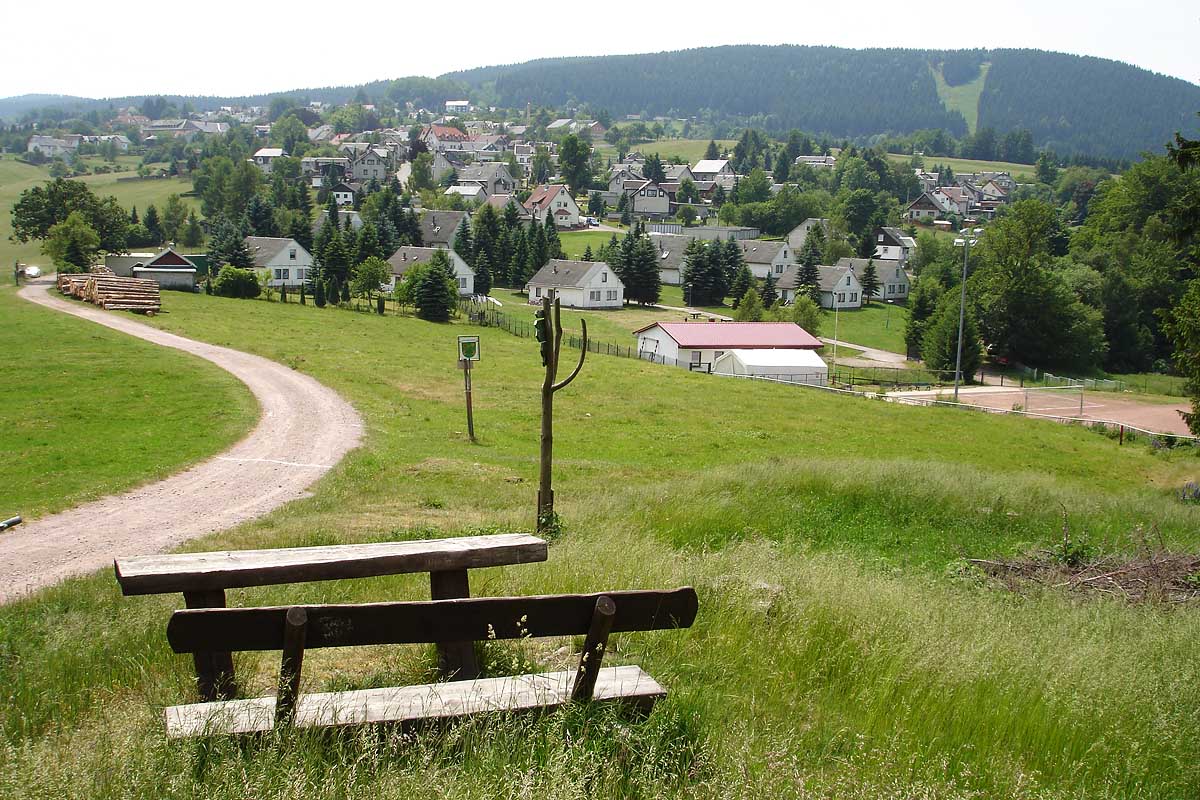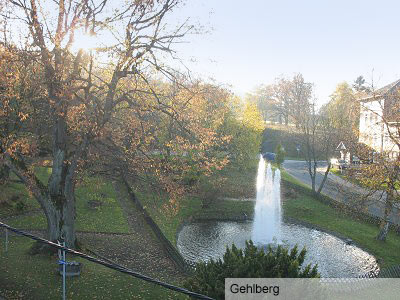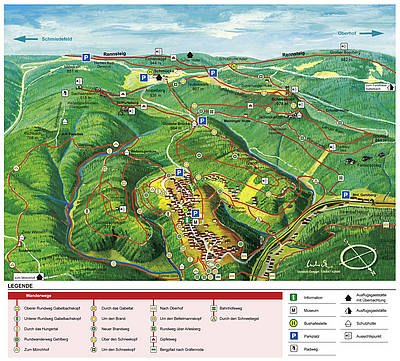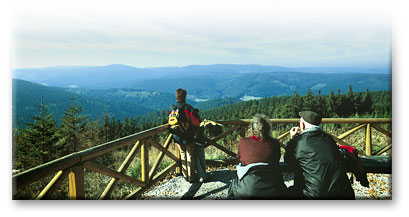Gehlberg
Gehlberg is a town in Ilm-Kreis in Thuringia in Germany. The place is located in the Thuringian Forest.
- 2.1 Population development
- 3.1 municipal
- 3.2 Mayor
- 3.3 Coat of Arms
- 3.4 Local Partnerships
- 4.1 Mountain Church
- 4.2 Museums
- 4.3 Attractions
Geography
Gehlberg is located on the northern slope of the Thuringian Forest on a plateau between the valleys of Wild and Tame Gera in the Thuringian Forest. The site extends from about 680-750 meters above sea level. The separated from the rest of the village district Gehlberger reason is about 600 meters above sea level in the valley of the Long Bach. The Rennsteig runs two kilometers south of the town. About a kilometer to the west is the 978 meter high snow head, the second highest mountain in Thuringia. Gehlberg is surrounded by vast pine forests; during the storm Kyrill in January 2007, occurred here to rather severe forest damage. The municipality Gehlberg includes not only the snow head, inter alia, the decorations.
Neighboring communities
Gehlberg is surrounded by large pine forests. The nearest towns or communities clockwise starting in the north are: Gräfenroda - Gera Mountain - Elgersburg - Ilmenau - Schmiedefeld - Suhl - Oberhof
The distance to the nearest neighboring Gräfenroda is on the road almost ten kilometers Gehlberg which is one of the most isolated places in Germany.
History
The community was founded in 1645 in the course of building a privileged of Duke Ernst I of Saxe- Gotha Glashütte. The first glassworks in the village was founded by the two originating from Fehrenbach glass masters Hans Holland and David Schmidt. The place that initially consisted only of only two houses together with baking and brewing house and cutting mill, that is the most recent local foundation in today's Ilm-Kreis. 1793 were counted 169 inhabitants, in 1820 there were 230 in 1821 after the construction of a hollow glass factory was approved in Gehlberg, they produced there from 1842 sheet glass. The factory became the main employer of the town. Gehlberg was still in the 19th century became a center of manufacture of thermometers and technical glass products for encoders. Specially molded glass was the condition of initially hand-crafted X-ray tubes and similar electron tubes. In this area had Gehlberger company ( company Gundelach ) initially a high market share. 1875 was employed by about 120 450 inhabitants there. The industrial glass production was continued in GDR times in its own glassworks and set in 1990. To date, Gehlberg regarded as glassmaking site.
Gehlberg belonged until 1918 to the Duchy of Saxe-Coburg and Gotha until 1920, Free State of Saxony -Gotha, 1922-1952 to the Thuringian district Arnstadt until 1994 county Suhl - country and since then the Ilm-Kreis.
Population Development
The population Gehlbergs has been declining for a long time. Alone between 2005 and 2009 they decreased by about 13.4 percent. Lag in 1939 nor in 1042 inhabitants, 821 people lived in 1989 in Gehlberg and 2009, only 674 reasons for the latter are the isolated location of the village in the Thuringian Forest in about ten kilometers away from other places, the lack of infrastructure on the task of Glashütte and lack of economic prospects. One source of income is tourism, but the competition of surrounding holiday resorts is great.
Policy
Gehlberg part of the joint management of Upper Geratal based in Gräfenroda.
Parish council
The Council of the Municipality Gehlberg consists of four councilors.
- Fremdenverkehrsverein Gehlberg e.V.: 2 seats
- Young Gehlberg: 1 seat
- Group of voters firefighters Gehlberg: 1 seat
(Updated: December 29, 2013)
Mayor
The honorary mayor Hans Lehrke was confirmed after the end of his first term on June 6, 2010 at the office.
Coat of arms
The coat of arms was approved on 14 May 1992.
Blazon: "In an elevated green is swept golden peak, is on a green hill growing a green spruce; Up front a golden flower, top rear a golden goblet. "
The story began in 1645 with the founding Gehlbergs a glassworks, which formed the basis for economic development. Spruce and arnica montana refer to the forests around the place.
The coat of arms was designed by the Frank Herald Diemar.
Local partnerships
- Breuna in Hesse
Culture and sights
A leaflet from the Tourist Information informed of some historic buildings of the town.
Mountain Church
The mountain church was built in 1751 probably last work of the Gotha Oberland architect Johann Erhard Strasbourg. The foundation stone was laid on September 15, 1749. The first sermon on April 19, 1754 could no longer hear the architect, since he was three months earlier, died in Gotha. Only slowly changed the church their appearance; 1859 wood shingle roof was replaced with a slate roof; 1938, the new Kircheninnere'eine Empor painted with flora and fauna motifs of the Thuringian Forest; the altarpiece of the painter Ludwig Treß dates from 1952 and shows biblical motifs. A wooden house ( house of God's faithfulness ), which served later as a parish and parish hall, was the parish in 1962 by the Lutheran Church of Finland; because the place does not have a pastor more, it is now used as a nursery ( Haselbrunn road). The parish belongs to the parish Gräfenroda.
End of the Second World War, in April 1945, the Brandleite tunnel should be blown up. The Reichsbahn upper Secretary Ernst Kallert (1901-1947), whose grave stone bears at the cemetery in Gehlberg this information is said to have made a major contribution that the project was not implemented in practice. The church received a new organ in 1857 from the workshop of Friedrich and Guido knob.
Museums
- Museum of Gehlberger glass tradition in the town center
- Wilderermuseum
Attractions
- In four kilometers located at the Rennsteig, which belongs to Gehlberg decorations. With 916 meters above sea level, the Ausflugsgaststätte is the highest inn on the Rennsteig.
- Among the major hiking destinations in the area Gehlbergs after the withdrawal of Soviet troops in the early 1990s heard again the 978 -meter-high snow head with a rebuilt in the years 2007/2008 observation tower and the mountain cottage opened in 2010. Every year the snow festival and the head hunters Steinfest take place there, to the thousands of guests arrive at the summit.
- Between Gehlberg and the fork head Bach nature and adventure Gehlberg was created and posted.
Economy and Transport
Gehlberg was a glassmaker village since its founding. The glass industry existed until 1990, today there are still a few artisan glassblowers. During the communist era Gehlberg was a highly frequented FDGB resort. As a nationally recognized resort the town has several hotels and guesthouses, tourism is the main industry in the town.
Gehlberg is on the road Schmücke Gräfenroda. The place also has a station on the line between Erfurt and Würzburg. The train station is about a kilometer north of the valley of the Wild Gera in Gehlberger reason, just before the entrance to the Brandleite tunnel that ends at Oberhof station.
Personalities
- Hans Kehr (1862-1916), surgeon, founder of the bile duct surgery in Germany, acted as patron in Gehlberg, 1908 where he had built a summer residence, which still exists today " bells in the valley ". Also Kehr's tomb is located on the property. To commemorate a lookout northeast of Gehlberg was renamed the beggar head in " Hans- sweeping stone ". For several years, will also find one of a medical symposium in Suhl donated commemorative plaque.



